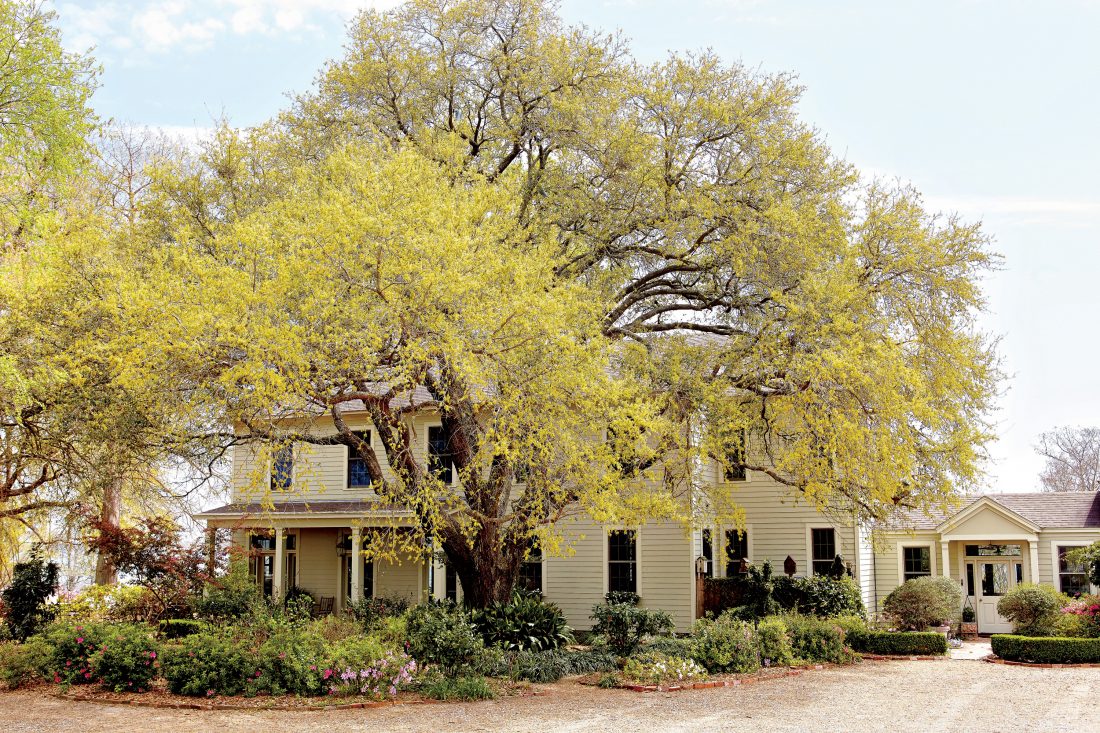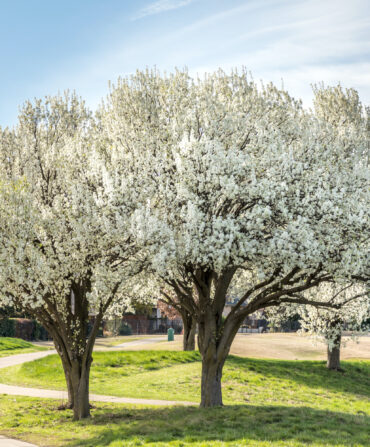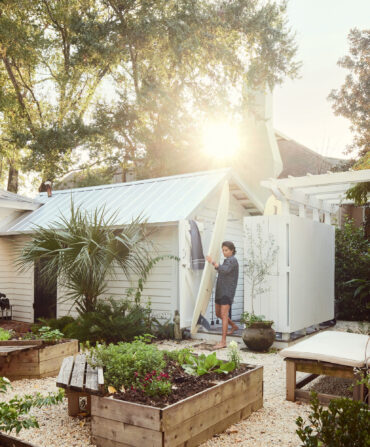Interior designers the world over know the work of Rebecca Vizard. The founder of B. Viz Design, she is renowned for her one-of-a-kind pillows fashioned from an array of antique textiles, from Venetian Fortuny draperies to Uzbek tribal tapestries. But despite her international esteem in the design world, Vizard prefers a down-home life in rural Louisiana. Her eclectic spread and the landscape that surrounds it serve as both her studio and her inspiration.
Born and raised in St. Joseph—the tiniest of backwater settlements on the Louisiana side of the Mississippi Delta—Rebecca had moved on to what was looking like a storybook life in New Orleans. After graduating from Tulane, she met and married Michael Vizard, a handsome Uptown boy whose clipped accent not only charmed her but stood in stark contrast to her own Delta drawl. They soon had one baby and another on the way. Meanwhile, the casual decorating advice she doled out to friends had led to interior design consultations in New York and beyond. “Before I knew it, I was flying all over the country doing these high-end projects,” Rebecca says, recalling those heady days twenty-five years ago when the world was opening up for her. She was going places.
But the Delta has a way of drawing you back.
Rebecca’s father needed Michael’s help with the family banking business and asked if they’d consider returning to St. Joseph. To Rebecca’s surprise, her city boy had a country heart. He liked to hunt and fish. He longed for more time outdoors. And so he jumped at an opportunity that Rebecca surmised was “good for everyone but me.” As she readily admits now, she couldn’t have been more wrong.
The Vizards decided to build their house on a picturesque two-acre swath of her family’s plantation, Locustland. Endless expanses of cotton fields lay on one side of the property while Lake Bruin—an oxbow lake formed from a pinched-off bend in the Mississippi River—hugged the other. For the house plans, they gave New Orleans architect Michael Carbine a tall order: create a combination New Orleans–style farmhouse, lake house, and hunting lodge. “We wanted it to be like The Big Chill,” Rebecca says. “A place where you pull up in your car and don’t get back in it for days.”
While the exterior, with its whitewashed siding, brick veranda, and French doors topped by an elegant transom, might look at home in the New Orleans Garden District, the doors open to a lodge-style great room with cypress walls and a wooden sculpture of geese taking flight. The room is so vast that the Vizard kids learned to Rollerblade inside.

Photo: Brie Williams
Flight of Fancy
The great room’s cypress walls were painted red and given an ochre glaze.
Just off the great room, the farmhouse kitchen looks built for the broad-planked wooden table in its center—the kind of table you might see yourself sitting around to shuck corn and shell peas, and then setting for dinner. Not surprisingly, it’s become a favorite gathering spot for family and friends. “At night everybody gets their cocktail, and Michael starts cooking,” Rebecca says. “He’s pretty entertaining.”
As their needs evolved, the Vizards expanded the house’s footprint along the lakeshore, an organic process overseen by Rebecca’s keen aesthetic eye. First came a studio for her burgeoning business, built using weathered lumber and fixtures from her grandfather’s abandoned fish camp down shore. Then came a brick-path breezeway to connect the studio to the main house. When a pesky ivy vine decided to force its way through a crack in the breezeway wall, she let it be. “That ivy dies in the winter and comes back in the spring,” she says. “But it can look so beautiful some people think we painted it on the wall.”
After Hurricane Katrina, with beds for displaced New Orleans family members at a premium and few hotels in the area, the Vizards decided they needed a guesthouse. Rebecca had always loved a side building located on the property of her late aunt Lucille Watson’s manorial home, about fifteen miles away. Dubbed the “playhouse,” it was originally built as a gaming parlor for soldiers returning home after World War II. Images of ducks painted by soldiers in between poker hands are still visible on the walls.

Photo: Brie Williams
The entrance to the playhouse, a favorite for the Vizards’ adult children.
Rather than trying to re-create the structure, Rebecca engaged a local carpenter and her then-teenage son, Ross, to truck the whole thing over on a flatbed, a process that took about five months. She renovated the playhouse’s original 1947 Ultramatic gas range and scouted some military bunk beds from an Army surplus store. Michael brought home a truckful of old bank teller chairs rescued from the trash heap to use for bar stools. Crowning it all is the “Beer-de-lier”—a dramatic teardrop chandelier that Rebecca made from hundreds of beer bottle caps gathered by area children.

Photo: Brie Williams
Salvage Style
The “Beer-de-lier,” made of recycled bottle caps.
Whether it’s the Beer-de-lier or the French flea market puppets that sit on the edge of the fireplace mantel, Rebecca’s keen sense of humor and easygoing attitude are evidenced throughout the house. But her commitment to St. Joseph is not to be taken lightly. The local women she employs to hand-sew her pillows have become like family to her and—like the expansive views from her porch—are a source of her inspiration and success.
“It’s so funny when I think I am sending pillows to Abu Dhabi,” Rebecca says, laughing. “But as everyone around here says, you don’t want to get too big for your britches. Living where I live keeps me grounded.”









